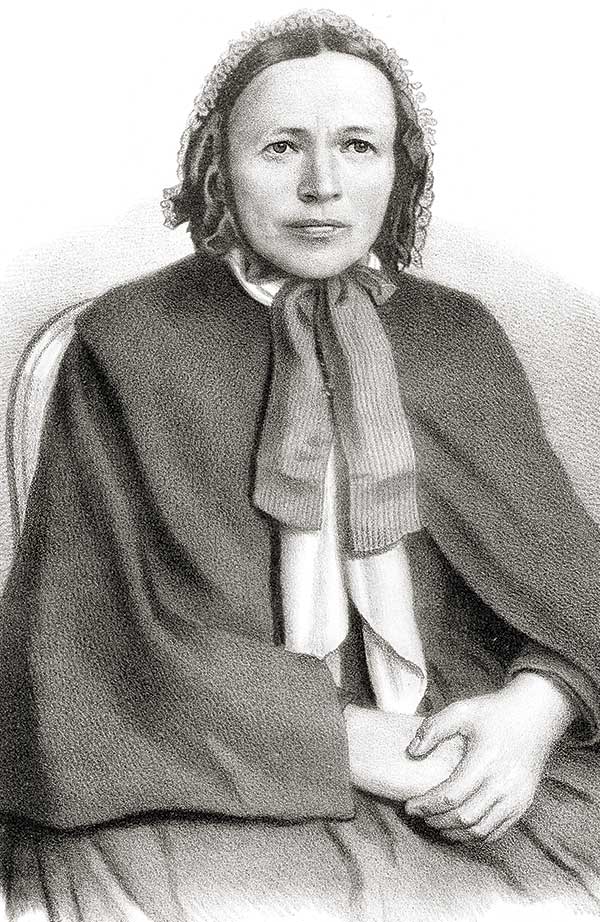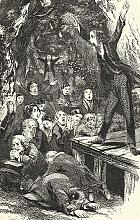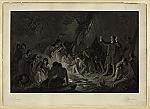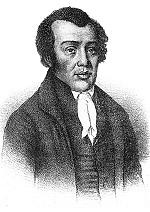Divine disruption

[Dorothea Trudel; or, The prayer of faith, Willard Tract Repository, 19th Century—Public domain, Library of Congress]
Three centuries of Protestant faith became the foundation for an extraordinary phenomenon in the United States: a free market of religious communities, filled with vibrant personalities and movements that interconnected and diverged in complicated ways. Deeper life and Holiness movements found common roots with Anabaptist and Pietist groups striving for true piety and ethical change. Vibrant Methodists continued to call for personal and social holiness. Restorationist and revivalist streams grew from their roots in the First and Second Great Awakenings. Adding to this hopefulness was the urgent dispensational eschatology of John Nelson Darby (1800–1882), the Campbellites, Irvingites, and others (see issues #106 and #128 for more).
Many of these streams converged in the healing revivals of the latter nineteenth century, specifically among those with a heightened expectation of the work of the Holy Spirit. These Christians believed that the delivering, healing, and empowering work of the Holy Spirit in the Gospels and Book of Acts was still at work centuries later. The recent lack of healing and miracles they observed was not to them divine reluctance, but a sign of the church’s weak faith and tacit belief that such signs and wonders were confined to the first century or in rare moments of missionary expansion. And as experiences of spiritual awakening, calls to holiness, and increased expectations of the miraculous grew, so did the revival streams feeding into the Pentecostal river.
“Jesus is victor”
America’s nineteenth-century healing movement had its roots in Europe. Johann Christoph Blumhardt (1805–1880), a Lutheran pastor and Pietist, set off a local revival in Germany after exorcising a demon-possessed woman through prayer. The last demon departed when the woman shrieked, “Jesus is the victor!” Dorothea Trudel (1813–1862), a working-class woman from Switzerland, also saw healing through prayer, starting with those who worked for her when a mysterious and serious illness broke out. As illness swept through people in her village, she cared and prayed for them as well, and many recovered. News of her healing prayer ministry spread throughout Europe, and people flocked to her home for care.
Both Blumhardt and Trudel were part of Holiness movements touching multiple denominations. They saw many people healed after fervent prayer but never offered a formula for such divine interventions. Word of their work, however, touched many around the world, influencing them in their own faith-healing journeys.
Elizabeth Baker (1849–1915) and her family were among those converted and nourished by the work of Blumhardt, Trudel, and other faith ministries in England and Europe. Baker, who experienced her own divine healing, began devouring books and testimonies about the subject. The influence of evangelist D. L. Moody (1837–1899) and the faith mission of George Müller inspired her to open a Healing Home in London in 1880. She would open more healing and training centers before the end of the century, her ministry eventually encompassing the United States and Canada. One of the most prominent recipients of healing in her London home was pastor and Deeper Christian Life author Andrew Murray.
Baker befriended Carrie Judd (later Montgomery), who would go on to missionary fame in the early twentieth century. Judd encouraged Baker and others that empowerment for mission included being used by God for signs and wonders as missionaries. Baker used this inspiration to establish missionary training centers in Ceylon and India.
“Faith-cures”
In Boston, Massachusetts, another man of faith found inspiration in Trudel. Charles Cullis (1833–1892) began his career in medicine as an Episcopalian physician. Deeply committed to human wellness and holistic medicine, he began teaching that God still does healing and miracles, in spite of the cessationist theology of many around him. In 1881 to 1882, he held healing services and built his first “faith-cure” home.
By the mid-1880s, he was holding faith conventions throughout New England. A. B. Simpson (1843–1919), founder of the Christian Missionary Alliance (CMA) and a leader in integrating the empowering work of the Spirit with missionary efforts, experienced healing in one of Cullis’s meetings. Within a few years, Simpson’s movements and others birthed more than 25 faith-cure homes that cared for the ailing while emphasizing the prayer of faith in James 5. Cullis authored several works on prayer and healing, often collecting the works of others.
Simpson’s ministry prior to the 1900s saw many healings and calls to missionary service. He is often touted as the leading “proto-Pentecostal” for his affirmation that Jesus is Savior, Healer, Baptizer, and Coming King—the “foursquare gospel” that became a popular summary for many twentieth-century movements. However, when some Pentecostal groups insisted on speaking in tongues as the key sign of the baptism of the Spirit, Simpson became less overtly Pentecostal, and the CMA was less sanguine about women in ministry.
Women in ministry, however, would not be dissuaded. Maria Woodworth-Etter (1844–1924) was a pioneering female evangelist and healer. Her early life was marked by sickness and timidity, but after her conversion and experience of Spirit empowerment, she found the courage to preach and to pray for the sick. As word of her meetings spread and testimonies of miracles grew, opposition arose from the church and the medical community. Woodworth-Etter was even arrested for “hypnotism.” Historian Mary Scantlin summarized her efforts:
She exhorted that salvation and faith had to be in place in order to experience these miracles. Believers saw every kind of disease healed in every meeting. Blind and deaf mutes were set free, sick, and crippled healed and those near death were raised up. Immediate miracles as well as ongoing healings were a constant.
Woodworth-Etter, a formidable force for female leaders, weathered many storms, including her divorce from an adulterous husband. She eventually remarried to a man who supported her. For evangelical and Holiness female leaders, her focus on proclamation, healing, and discipleship, and her ability to navigate opportunity in a male-dominated world, were exemplary traits worthy of emulation.
Developing a doctrine of healing
Amid the rise in healing ministries rooted in Holiness and later, the Keswick “Deeper Life” movement, which taught believers should experience a second “deeper” work of God after conversion (see CH #148), leaders offered a variety of formulations that connected conversion, justification, sanctification, and empowerment. Methodists and most Holiness groups proclaimed salvation and sanctification as the two central and distinctive experiences of the Christian life. Many conflated the baptism of the Holy Spirit in Acts 2 with sanctification.
Other groups who believed in progressive sanctification, such as Deeper Life streams, began preaching the baptism of the Holy Spirit as an empowerment for ministry, especially missionary service. They separated this experience from salvation. But many Holiness leaders added Spirit baptism as a third experience alongside salvation and sanctification.
Faith and sound theology thus proved complicated in practice. The interwoven ministries of R. A. Torrey (1856–1928) and D. L. Moody are an important window on the complexities of medicine and faith healing, as well as what constituted a normative Christian experience of empowerment and healing.
Torrey, a well-educated Christian scholar, experienced God’s grace under the influence of Moody’s passionate calls for surrender to Christ. Torrey left the allure of higher criticism and emerging theological liberalism and strove for a “clear and plain” understanding of the Bible. He would later lead Moody’s Bible Institute and be a key contributor and editor of The Fundamentals, a multivolume defense of conservative evangelical theology.
Torrey strongly believed the baptism of the Holy Spirit empowered the Great Commission and that those on the frontier of mission should expect to see signs and wonders that included healing and deliverance. But he also embraced medical care and left room for suffering in the Christian life.
Moody was the most prominent evangelical evangelist in the late nineteenth century. He called for conversion and consecration and believed in subsequent empowerments of the Holy Spirit for evangelization. Both Moody and Torrey were temperate enthusiasts leaving room for mystery while calling Christians to increase their faith in the God who delights in doing wonders. Moody refined the evangelistic campaigns, mobilizing local churches and working across denominations. He also never forgot his early days of working with the poor, and he made sure that converts and their churches engaged in substantive outreach to their communities. And all of this was accompanied by an urgent, dispensational eschatology.
God saves and seals
One of the most colorful healing evangelists of the late nineteenth and early twentieth centuries, Smith Wigglesworth (1859–1947) believed and lived a life of aggressive evangelism, deep prayer, and healing faith. He called on believers to trust God for healing and holiness and often was quite physical in his healing prayers. His words attest to his passion:
The reason the world is not seeing Jesus is that Christian people are not filled with Jesus. They are satisfied with attending meetings weekly, reading the Bible occasionally, and praying sometimes. . . . It is an awful thing for me to see people who profess to be Christians lifeless, powerless, and in a place where their lives are so parallel to unbelievers’ lives that it is difficult to tell which place they are in, whether in the flesh or in the Spirit.
Controversial and sincere, Wigglesworth remained immensely influential well into the twentieth century.
“Faith is just the open door through which the Lord comes,” he said, adding:
Do not say, “I was saved by faith” or “I was healed by faith.” Faith does not save and heal. God saves and heals through that open door. You believe, and the power of Christ comes.
From the evangelical awakenings of the eighteenth and nineteenth centuries to the Holiness and Deeper Life movements throughout, we see interwoven threads of spiritual vitality, expectation of the miraculous, and faith for transformation, including divine healing. These healing revivals were more than proto-Pentecostal stirrings—they were, in fact, revitalizations of Holy Spirit activity that would fuel the early twentieth-century Pentecostal outpourings that have changed the face of global Christianity. CH
By Charlie Self
[Christian History originally published this article in Christian History Issue #151 in 2024]
Charlie Self is a minister, author, and associate professor of church history at Assemblies of God Theological Seminary.Next articles
More great awakeners
These unconventional figures preached the gospel and fomented revival
Jennifer A. BoardmanAwakenings: Recommended resources
Read more about the Great Awakenings and the renewal movements that preceded and followed them in these resources recommended by our authors and the CH team.
the editorsMore than revival
The Second Great Awakening Christianized a nation from East to West
Thomas S. KiddSupport us
Christian History Institute (CHI) is a non-profit Pennsylvania corporation founded in 1982. Your donations support the continuation of this ministry
Donate







